PROTECT YOUR DNA WITH QUANTUM TECHNOLOGY
Orgo-Life the new way to the future Advertising by AdpathwayTomatoes, as one of the most widely cultivated crops, are susceptible to a plethora of pests! Many insects and small arachnids like to eat their leaves, fruits, and stems before you’re able to harvest them. Tomato russet mites are one of the most common of these pests at the end of the growing season.
You may have never heard or seen these late summer tomato pests, and that’s because they’re tiny and incredibly difficult to see! You’ll need a microscope or jeweler’s loupe to see them. You’ll first notice the stippling they cause, which acts as an indicator of their presence.
Prevention tactics work well to keep these mites at bay, though they are challenging to control once they arrive in full force. Learn how they live, what they do, and where they thrive. Then, use their life cycle against them to prevent them from taking over.
CobraHead Original Weeder & Cultivator

CobraHead Original Weeder & Cultivator
Epic Organic Garden Straw
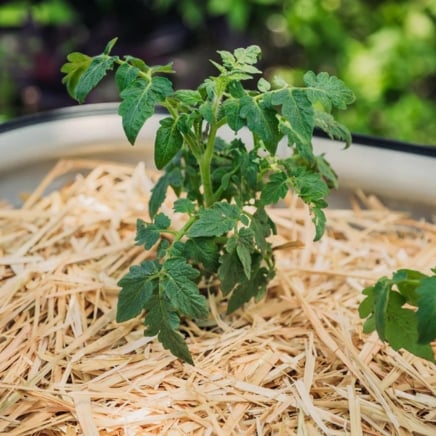
Epic Organic Garden Straw

What Is This Late Summer Tomato Pest?
The tomato russet mite is a type of arachnid, and not an insect. It’s microscopic, and it reproduces rapidly under the right conditions. A small group quickly turns into a large population if there are ample tomatoes for them to eat.
The Tomato Russet Mite
 Mites congregate on the undersides of leaves and spread to fruits.
Mites congregate on the undersides of leaves and spread to fruits.Mites are more closely related to spiders than they are to aphids, despite their similar behavior. The mites congregate on the undersides of leaves. They use their mouthparts to pierce the plant and suck its juices.
This sucking action creates dots all over the foliage, stems, and fruits of your tomato crop. You’ll notice the lower leaves turn bronzey-brown, then yellow before they fall off or wither. Mite damage on the fruits may cause them to turn brown, and some will form cracks up and down the length of their skin.
The mites reproduce rapidly the more they feed, and their population grows in size. Uncontrolled, a small group can quickly multiply into an unmanageable infestation. Keep a close eye on your tomato plants so you notice the symptoms before it’s too late.
This particular late summer tomato pest is nearly worldwide in its distribution. Find it present wherever plants in the nightshade family are growing. The only places you won’t find it are at the poles, where it’s cold year-round.
Crops Affected
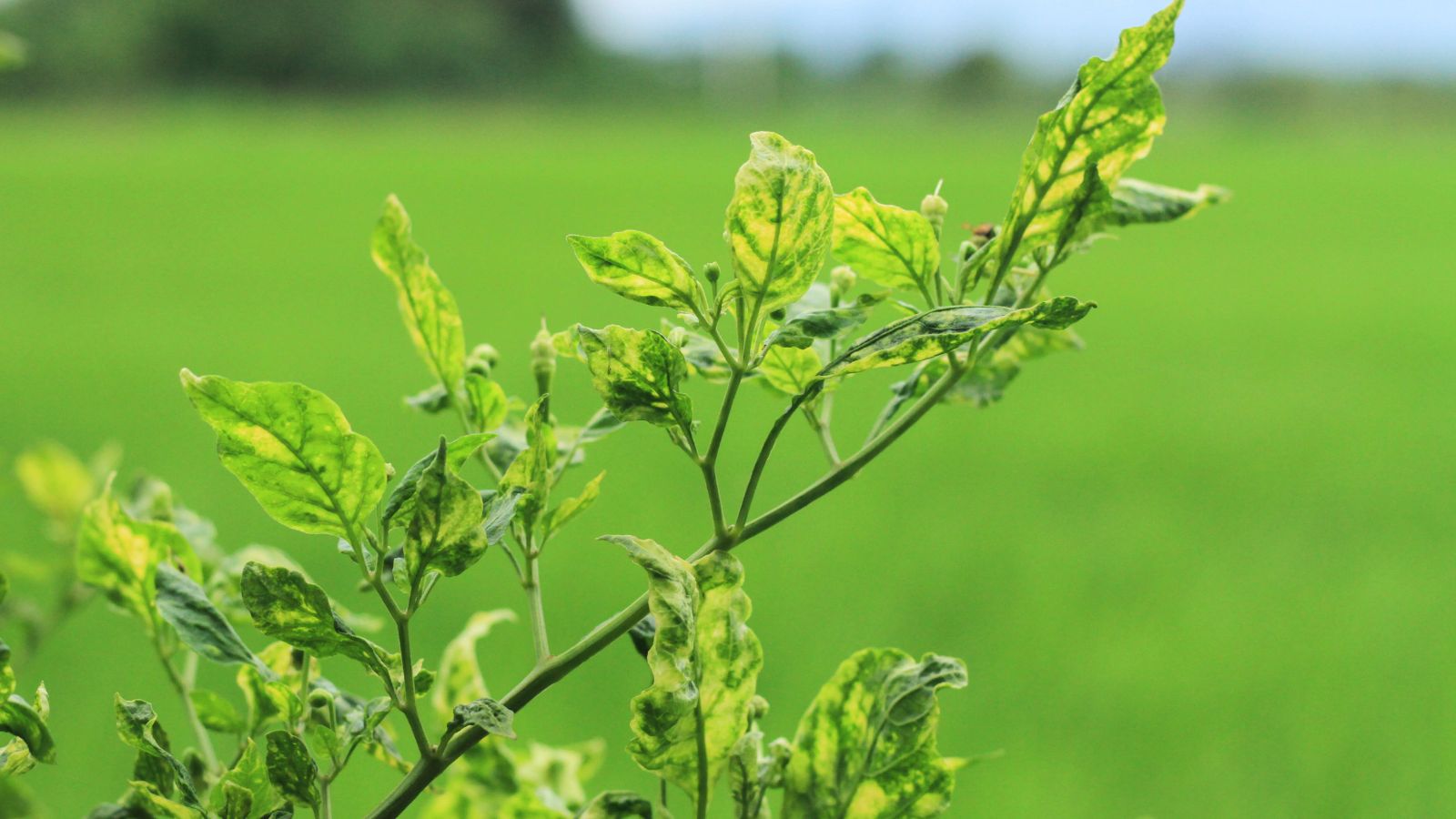 Tomatoes are not the only plants they attack.
Tomatoes are not the only plants they attack.Though tomato is in their name, tomato russet mites attack a wide range of plants in the nightshade family, Solanaceae. They’re exclusive to the family, meaning they only target crops within it. Find them feeding on other plants like potatoes, tomatillos, peppers, nightshades, and datura weeds.
Spacing these plants out in the garden can reduce the spread of these late summer tomato pests. They cannot fly, and they rely on the wind or moving objects to go from one area to another. They’ll use your arms, your pets, or your tools to reach new garden areas.
To reduce the mites’ spread, consider interspersing tomatoes with onions, beans, and basil. The more variety your garden contains, the more resistant it will be to pressures from pests and diseases.
How to Prevent It
The first defense against this late summer tomato pest is prevention. Rather than waiting for pests to arrive to combat them, you may place defenses ahead of time to thwart their attacks. Maintain a healthy tomato garden, practice basic crop sanitation, and wait to transplant your tomatoes until the weather is mild.
Remove Garden Debris
 Pests hide out in garden debris.
Pests hide out in garden debris. Many sources show that healthy garden sanitation is crucial in the fight against tomato russet mites. These pests use nearby weeds and leftover debris to hide in. Then, when they find a suitable host plant, they reproduce rapidly.
By removing old debris from the previous year, you’ll prevent the arachnids from overwintering. They need relatively warm conditions to overwinter, and they’ll hide in greenhouses in northern gardens. Cut down all tomato plants in the fall and dispose of them away from the site to prevent reinfestation.
Properly dispose of old leaves, stems, and fruits in a few different ways. You may hot compost them to kill the pest, or bury the waste a foot or deeper below ground. Gardeners with green waste programs in their cities may throw the debris into the plant waste bin for further processing.
Pull Weeds
 Weeds increase mite populations.
Weeds increase mite populations. Weeds are the second thing to consider! These mites use them to feed before they locate larger plants to infest. Any weed in the Solanaceae family will work for them, so it’s best to be diligent when weeding the site.
As with disposing of garden debris, getting rid of mite-riddled weeds is an important task. Hot compost them, bury them deep underground, or dispose of them in your green waste bin.
Sanitize Tools
 Always clean your tools before you use them on healthy plants.
Always clean your tools before you use them on healthy plants. Sanitize your tools! This habit has a long list of benefits beyond reducing the spread of this late summer tomato pest. Proper sanitation kills diseases and pests that use your tools to spread. With clean pruners and loppers, you’ll never worry about infecting a plant yourself.
Rubbing alcohol works well to sanitize and sterilize, as does ethyl alcohol. Simply dip the tools in the alcohol and let them air-dry—no scrubbing needed!
Sanitize your tools annually before putting them away in winter, and repeat the act both before and after you prune. This will kill mites, and it’ll prevent diseases like late blight from spreading.
Cultivate a Healthy Crop
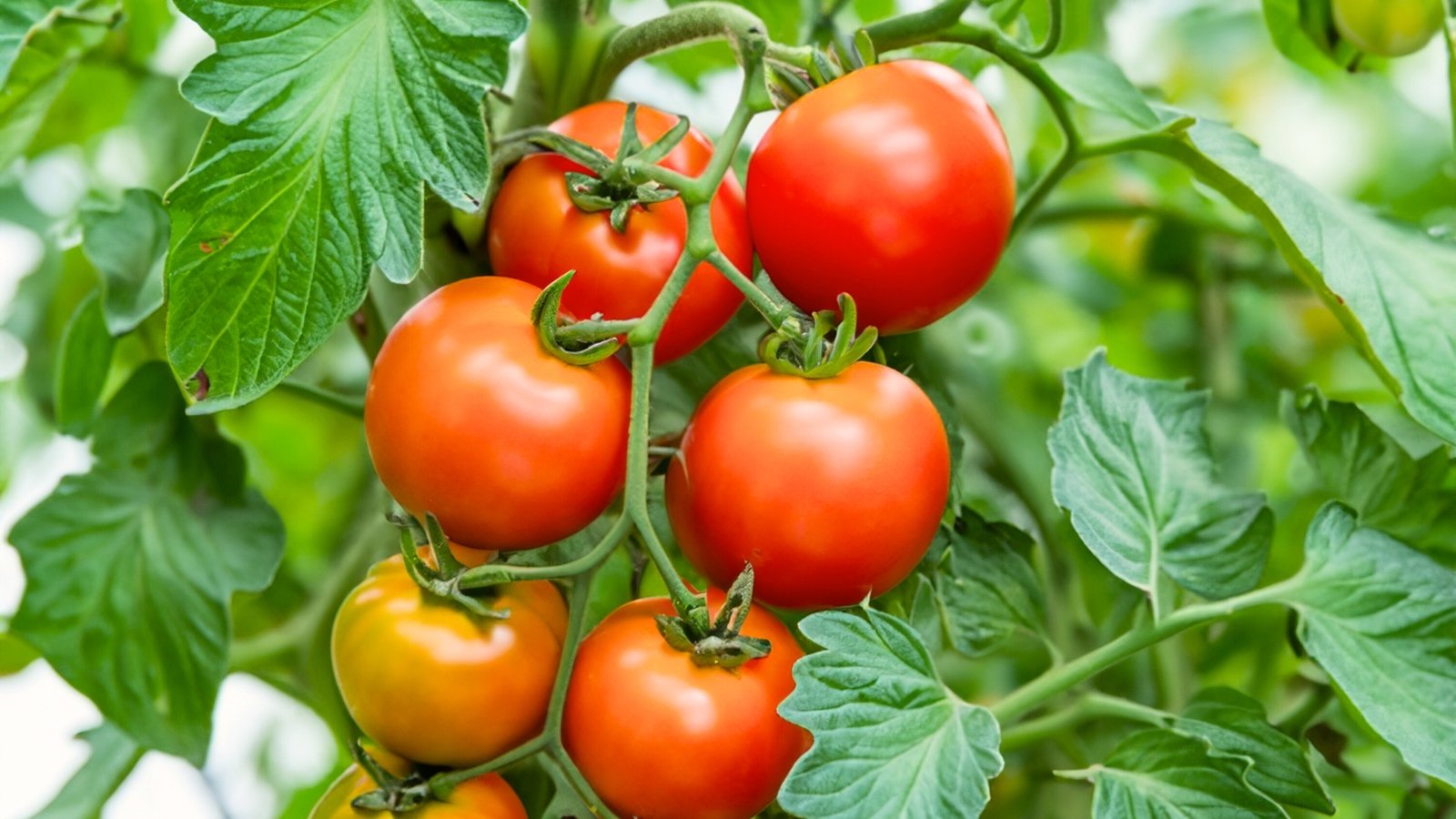 Healthy plants are less likely to succumb to mite damage.
Healthy plants are less likely to succumb to mite damage. Healthy tomato plants resist pests better than struggling ones. When a plant has all that it needs, it uses its defense mechanisms to discourage pests and diseases. Strong, turgid leaves are more resistant to piercing than wilting, weak ones.
A few regular practices ensure a thriving crop. Start by mulching! Mulch is incredibly beneficial. It feeds, insulates, and protects the soil. Good soil leads to a good crop, and the two are inextricably linked. Using an organic mulch like compost or straw, place a layer two to three inches thick on top of the ground.
Aside from regular mulching, tomato plants benefit from staking, feeding, and regular watering. Support them with a stake or trellis unless you’re growing free-standing bush types.
Water regularly to maintain moist, but not soggy, soil. Feed with an organic fertilizer specific to tomatoes. Add a regular dose after planting, and another when fruits begin to form.
Wait to Transplant
 Transplant at the right time to prevent stress.
Transplant at the right time to prevent stress. Transplanting shocks plants! They must adapt to a new environment and simultaneously sprout new shoots and roots. It’s best to transplant when the weather is mild and temperatures are warm, but not excessively hot.
If it’s midsummer, wait a few days to transplant your seedlings. You don’t want to put them under the beating sunlight and hope they make it.
When transplanting, there are a few things you can do to ensure the seedlings establish successfully.
Consistent moisture is the most important factor. Water regularly to keep the ground moist, not soggy. A week or two after transplanting, give the seedlings a boost with a regular dose of organic fertilizer.
How to Handle It
Let’s say you did all of the above steps, and you still see tomato russet mite damage. Don’t panic! Save the crop from this late summer tomato pest with these management techniques.
Don’t Use Sulfur
 This remedy is ineffective against mites.
This remedy is ineffective against mites. Many sources claim sulfur kills these mites. Recent studies show that it’s ineffective as an organic pesticide against them. Leave the sulfur in the shed for other use cases.
Pesticides, in general, have lasting effects on the surrounding environment. They may kill the pest in question; however, they also cause predator-prey imbalances that lead to future infestations. Broad-spectrum pesticides, like soaps and catch-all products, kill indiscriminately and harm bees, butterflies, and birds.
Consider trying integrated pest management (IPM). This system takes a look at the entire ecosystem. It considers biological controls, prevention tactics, and mechanical traps that cause less harm to the environment than toxic pesticides.
Wet the Leaves
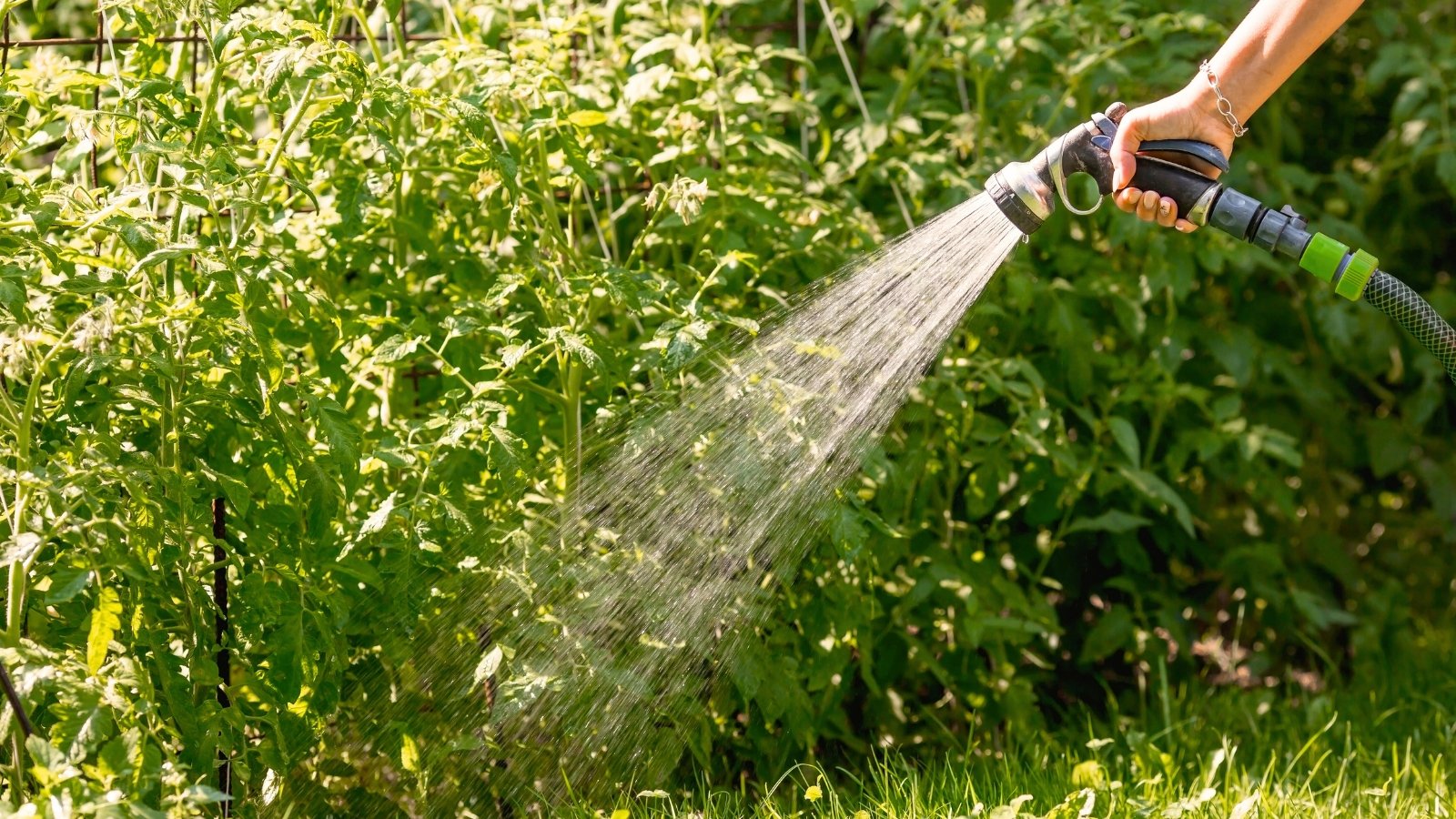 Tomato russet mites thrive in dry environments.
Tomato russet mites thrive in dry environments. A simple stream of water is more effective than you’d think! It manages thrips, aphids, mites, and a range of other pests. Many pests prefer dry environments on the foliage, and wetting them discourages the pesky critters from setting up.
Wetting the foliage is better than snipping it off. This late summer tomato pest is so tiny that you can’t see where it is. If you see damaged leaves, it’s likely the pest population has already moved to a higher branch for fresh food. Excessive pruning will weaken the crop instead of helping it.
This method requires consistency to work well. Hose the leaves daily, or twice daily, on all plants where you see tomato mite damage. Get the undersides of the leaves, the stems, and the fruits. Soil particles can spread diseases, so try your best not to splash soil onto the leaves.
A week or two of daily spraying should knock most of these mites off and discourage them from spreading. The plants will be able to grow big and tall, and they’ll resist future infestations.
Remove Infested Plants
 Remove plants where populations are out of control.
Remove plants where populations are out of control.Occasionally, the pest population grows out of control and causes multiple leaves to drop. At this stage, it’s best to move on rather than lose an uphill battle. You’re better off starting with new cuttings than you are coaxing a crop out of a mite-riddled plant.
Pull up the infested tomato plants and discard them away from the growing site. Hot compost them, bury them deep, or dispose of them in a bin. Never leave them to decay nearby, as the arachnids will spread from the dead debris onto your garden plants.


 5 days ago
27
5 days ago
27




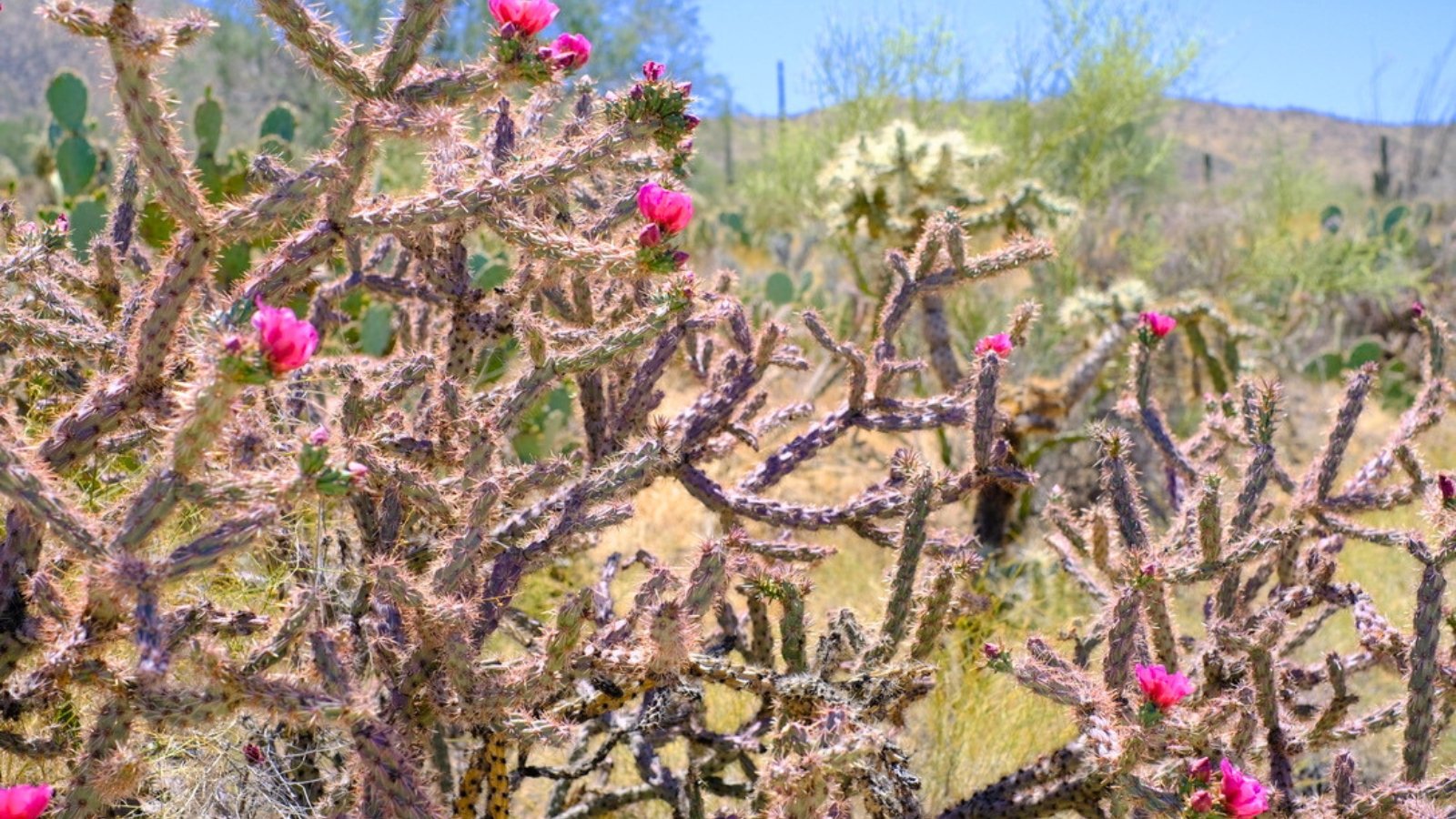
















 English (US) ·
English (US) ·  French (CA) ·
French (CA) ·